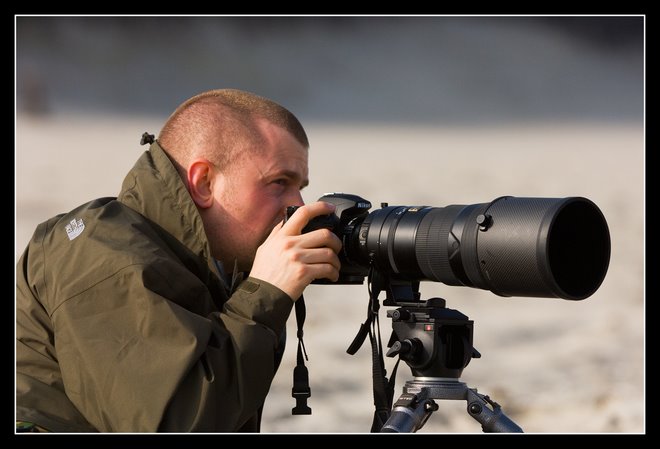30 or so months ago I wrote a
blog reviewing the Nikon 50mm f/1.8D prime lens. When I wrote the article I was still shooting with a DX crop body, and I summised that the 50mm on a DX body was a great portrait lens, and ideal for use at live gigs.
Now I've moved full format with the D3, the 85mm f/1.4D has become my weapon of choice for gig photography, and I find the 24-70mm invariable for using in the studio due to the flexibility of the zoom.
Still, I maintain that the 50mm is an ideal focal length for the above type of photography on a crop body. For a while there was a bit of a gap in the Nikon lens lineup though, as some of the newer crop bodies (like the D60 and most of the newer entry level SLRs) are unable to autofocus with the lenses that don't contain a focus motor, and require an AF-S lens for full functionality.
However, at Photokina in 2008 NIkon updated their prime lens range to also include the Nikkor 50mm f/1.4G lens. Not only did this update the optical formula of the old 50mm f/1.4D lens, it also added an internal motor, making this an AF-S lens, and putting it within the reach of people starting out with the entry level SLR.
The main criticism that internet pundits had of the new 50/1.4 was the price - at around €350 at introduction (can be picked up for €300 now), it was almost three times the price of the 1.8 variety, and for only a slight improvement in light sensitivity, was thought to be a bit expensive.
It was this reason that also stopped me from picking up the 50/1.4 initially - after all, the 50/1,8 had never given me any problems, and with all the other lenses in my arsenal, I wasn't missing out on anything by not having it.
So, fast forward 12 months, with the imminent arrival of our baby, Tabatha (born October 18th 2009!), I'm thinking out my camera strategy :) The 24-70mm is a great general purpose lens on the D3, but it's big, wieldy, and pretty scary to a new born. Add to that the business travel I do, it's a lot easier to take a body and a couple of small primes (think 24mm, 50mm, and maybe either a 16mm fish or an 85mm) than a big zoom lens.
So I decide the 50mm will become my solution for quick, around the house, shooting, and to begin with, the 50/1.8 was working fine, and gave me fine results such as the following:

But then, the NAS demons began playing in my head, and, on the way back from visiting hours at the hospital, I passed the camera store, and the rest, as they say, is history.......
Som how does the 50/1.4 compare to the 50/1.8? Well, to be honest, they are both very fine lenses. Both are small, light, and can be tucked away into a corner in a camera bag very easily. There are a couple of advantages of the 50/1.4 that I have noted:
- Firstly, the lens is provided with a lens hood. Although this is only a fairly lightweight plastic, it does provide protection should the lens get knocked or dropped. (of course a lens hood is also available for the 50/1.8, but this is extra cost)
- Next, it has an AF-S motor. With such a small lens, this doesn't help so much with focusing speed, but I have noticed a definite improvement over the amount of time it spends searching for the focus point in low light, compared to the 50/1.8. And of course this makes the lens compatible with some of the newer Nikon cameras
- Finally the lens has the advantage of going down to f/1.4, giving you that extra bit of flexibility when shooting in low light, as well as a nice bright viewfinder. To be honest I have probably spent most of the time shooting with this lens wide open, despite a fair number of people suggesting it is soft until it is stopped down a couple of shots (in fact all shots taken by the 50/1.4 in this blog entry were taken wide open at f/1.4, and I find results more than sharp enough)

The 50/1.4 has a plastic lens body, the same as the 50/1.8, although I must say in defense of the 1.8, it does feel slightly more sturdy. It's a 58mm filter size compared to the 52mm on the 1.8, although I have not bothered mounting a filter on this lens, due to the protection the lens hood gives.

This lens has been mounted on my camera pretty exclusively on the occasions when the D3 is sitting at home and I am not using it on a job. I've found it an ideal lens for (baby) snapshots, and it makes the D3 a lot less imposing than one of my larger pro lenses.
So, do I recommend this lens? That's a difficult one, as the 50/1.8 is such great value for money, so it really boils down to whether or not you need the extra lens speed, and the built in focusing motor. If you have the money, go for it! But if you already have the 50/1.8, you might want to think carefully about upgrading.....











